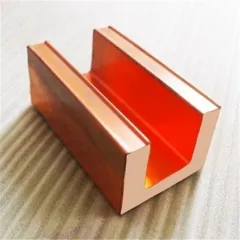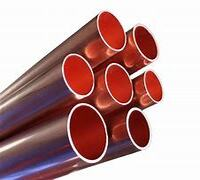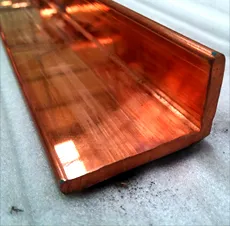1. Introduction
In the past 48 hours, global copper prices have surged due to supply chain disruptions in major mining regions, pushing copper rod price and copper strip price to multi-week highs. This spike has renewed interest among DIY recyclers and scrap dealers in efficiently recovering clean copper—especially from insulated wiring. If you’ve got bundles of old cables or copper strip wire lying around, knowing the best way to strip copper wire can mean the difference between pocket change and serious profit.

Stripping copper wire isn’t just about removing insulation—it’s about preserving the metal’s purity, avoiding hazardous methods like burning copper wire for scrap, and choosing the right technique based on wire type and volume. Whether you’re dealing with thin copper strips from electronics or thick copper rod for welding leftovers, this guide walks you through safe, legal, and effective stripping methods.
2. Why Stripping Copper Wire Matters
Clean, bare copper fetches significantly higher prices at scrap yards than insulated or contaminated wire. For example, stripped copper wire can sell for 2–3 times more per pound than insulated cable. Additionally, many recyclers now reject burned wire due to toxic fumes and impurities—so burning copper wire for scrap is not only dangerous but also financially unwise.
High-value copper forms include copper strip wire, flat copper strip, nickel plated copper strip, and even beryllium copper strip used in aerospace or electronics. Recognizing these can boost your earnings, especially if you’re sourcing from industrial equipment or HVAC systems containing aircon copper pipe or copper tubing.
3. Tools and Methods for Stripping Copper Wire
3.1 Manual Wire Strippers (Best for Small Jobs)
For short lengths or delicate work (like stripping copper wire from motors or electronics), use precision wire strippers. Choose adjustable models that match your wire gauge to avoid nicking the copper.

- Ideal for thin copper strips or 1mm copper strip recovery
- Low cost and widely available at hardware stores
- Works well for stripping wire for recycling in small batches
3.2 Automatic Wire Stripping Machines (Best for Volume)
If you’re processing more than a few pounds daily, invest in a benchtop or handheld automatic stripper. These machines quickly remove insulation from various gauges without damaging the copper inside.
- Handles everything from copper strip wire to thick copper rod
- Some models separate copper from aluminum automatically
- Great for stripping copper wire for scrap at scale
3.3 Rotary Cutters and Razor Blades (Use with Caution)
For field work or when machines aren’t available, a utility knife or rotary cutter can work—but requires skill. Always cut away from your body and wear cut-resistant gloves.
- Risk of cutting into the copper, reducing value
- Only recommended for experienced users

4. What NOT to Do: Avoid These Common Mistakes
Never burn copper wire for scrap. Burning releases toxic dioxins and leaves carbon residue that lowers copper purity. Most reputable scrap yards now test for burned wire and will reject or heavily discount it.
Also avoid using chemical strippers unless in a controlled industrial setting—they can corrode the copper or leave residues that affect resale value. And don’t confuse copper strip with copper stip (a common typo); always verify you’re working with genuine copper metal strips.
5. Identifying High-Value Copper Types
Not all copper is equal. Look for these premium forms:
- Copper strip roll or roll of copper strip: Often used in electrical panels; high conductivity
- Beryllium copper strip or copper beryllium strip: Extremely valuable; used in springs and connectors
- Flat copper strip or copper edging strip: Common in roofing (copper roof strip) or earthing systems (copper strip for earthing)
- Copper bonded ground rod or copper clad steel earth rod remnants: May contain recoverable copper cladding
Even copper pipework offcuts or air conditioning copper pipe scraps can be stripped and sold as clean copper tubing.
6. Maximizing Profit: Tips for Scrap Sellers
Before heading to the yard, sort your copper by type: bare bright, #1 copper (clean pipe or bus bar), and #2 (tarnished or mixed). Stripped copper wire usually qualifies as bare bright—the highest grade.
Check local listings for ‘copper strip near me’ or ‘copper bars for sale’ to compare scrap prices. Keep an eye on copper rod price trends—when prices rise, it’s the best time to sell. Also, ask if the yard accepts copper alloy strip or flexible copper bus bar, which may have niche value.
7. Conclusion
Stripping copper wire for scrap or recycling doesn’t have to be tedious or risky. With the right tools and knowledge, you can safely recover high-purity copper—from thin copper strips to copper rod for welding—and earn top dollar. Avoid shortcuts like burning, invest in proper stripping methods, and always sort your materials. As copper prices remain volatile but strong, now is an excellent time to turn your copper waste into cash.
Our Website founded on October 17, 2012, is a high-tech enterprise committed to the research and development, production, processing, sales and technical services of ceramic relative materials such as How. Our products includes but not limited to Boron Carbide Ceramic Products, Boron Nitride Ceramic Products, Silicon Carbide Ceramic Products, Silicon Nitride Ceramic Products, Zirconium Dioxide Ceramic Products, etc. If you are interested, please feel free to contact us.

